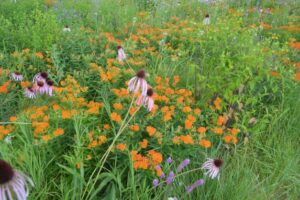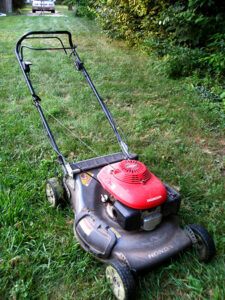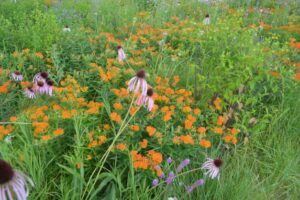

Water-Friendly Fall Yard Care
Fall yard care can not only benefit your plants but, if done properly, can also contribute to the health of the lakes and streams in your community. These tips will keep your yard thriving and your neighborhood pollinators happy, all while preventing runoff pollution from leaves, grass, and other yard waste.

Mow Less for healthy grass
Mowing your grass at the height of 2.5 to 3 inches will help your lawn flourish. Letting your grass grow to this height will allow it to grow deeper roots to reach more water during dry spells.
Fall weeding
Many perennial weeds will distribute seeds in the fall. Reduce your springtime weeding by paying special attention to pulling weeds now. If you choose to use herbicides, pay special attention to the directions and take the recommended safety precautions on the label.
Plant natives now for spring color
Fall planting encourages plants to grow nice, strong root systems, leading to more drought-resistant plants down the road. This can mean larger plants and more blooms in the spring as well. Autumn days are also cooler, which keeps the soil moist and requires less watering.
plants down the road. This can mean larger plants and more blooms in the spring as well. Autumn days are also cooler, which keeps the soil moist and requires less watering.
Leaves in the street lead to water pollution
Leaves and other yard waste are some of the most significant contributors to phosphorus pollution in our lakes, rivers, and streams. Water bodies with more phosphorus make an ideal environment for algae, and the pollutant reduces oxygen in the water that native fish need to live. Make sure to mulch or rake your leaves to prevent them from entering the street, where they often end up in drains that lead directly to your neighborhood waters.
Adopt A Drain
Show your favorite area lake, river, or stream some love and protect it from runoff pollution. Only 15 minutes twice a month can lead to reduced phosphorus, chloride, and other pollutants in local waters. Learn more and sign up at adopt-a-drain.org